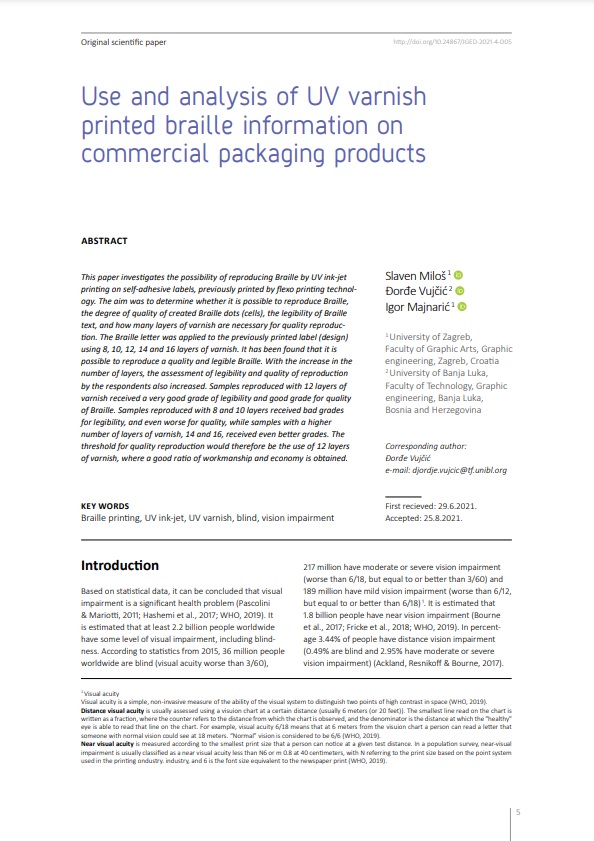Use and analysis of UV varnish printed braille information on commercial packaging products

Published 2021-12-01
abstract views: 420 // Full text article (PDF): 263
Keywords
- Braille printing,
- UV ink-jet,
- UV varnish,
- blind,
- vision impairment
How to Cite
Copyright (c) 2021 © 2021 Authors. Published by the University of Novi Sad, Faculty of Technical Sciences, Department of Graphic Engineering and Design. This article is an open access article distributed under the terms and conditions of the Creative Commons Attribution license 3.0 Serbia.

This work is licensed under a Creative Commons Attribution 3.0 Unported License.
Abstract
This paper investigates the possibility of reproducing Braille by UV ink-jet printing on self-adhesive labels, previously printed by flexo printing technology. The aim was to determine whether it is possible to reproduce Braille, the degree of quality of created Braille dots (cells), the legibility of Braille text, and how many layers of varnish are necessary for quality reproduction. The Braille letter was applied to the previously printed label (design) using 8, 10, 12, 14 and 16 layers of varnish. It has been found that it is possible to reproduce a quality and legible Braille. With the increase in the number of layers, the assessment of legibility and quality of reproduction by the respondents also increased. Samples reproduced with 12 layers of varnish received a very good grade of legibility and good grade for quality of Braille. Samples reproduced with 8 and 10 layers received bad grades for legibility, and even worse for quality, while samples with a higher number of layers of varnish, 14 and 16, received even better grades. The threshold for quality reproduction would therefore be the use of 12 layers of varnish, where a good ratio of workmanship and economy is obtained.
Article history: Received (June 29, 2021); Revised (August 19, 2021); Accepted (August 25, 2021); Published online (December 1, 2021)

